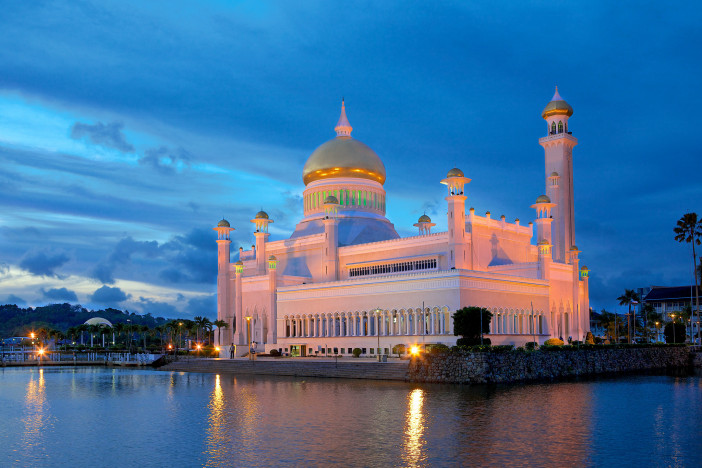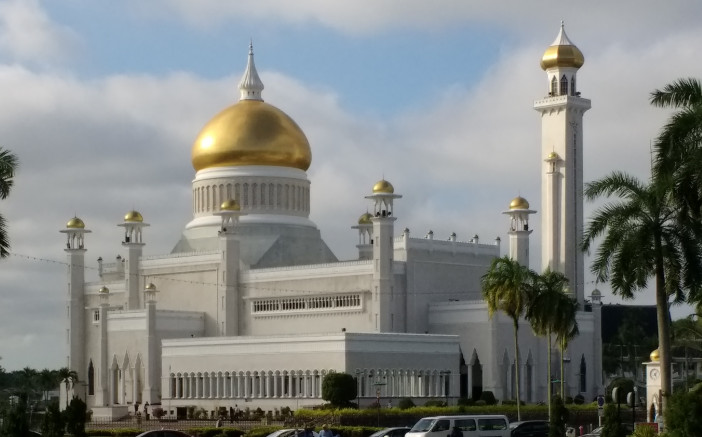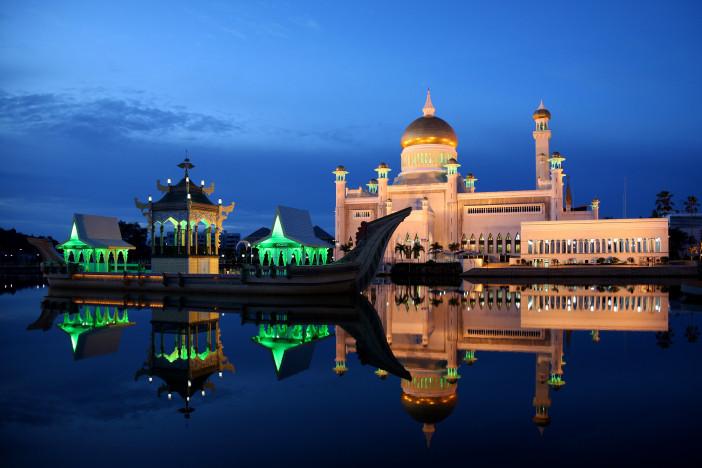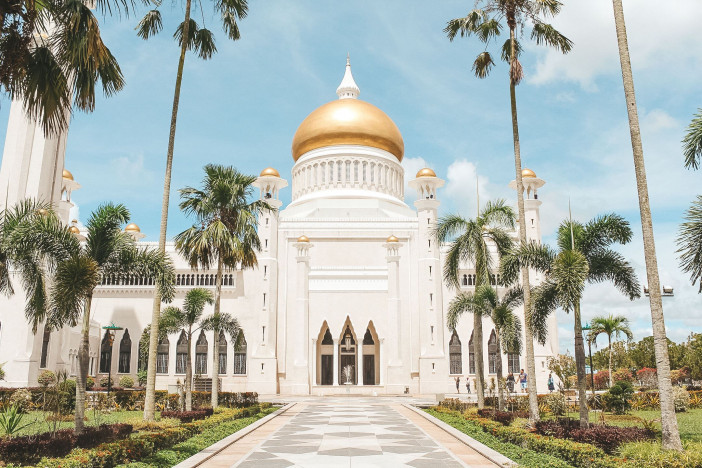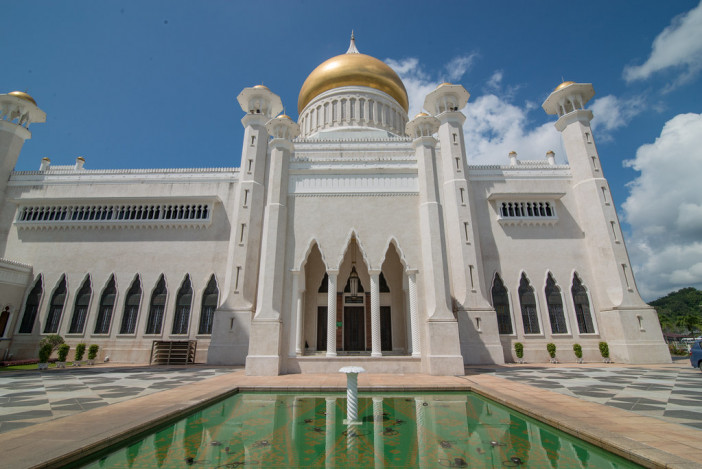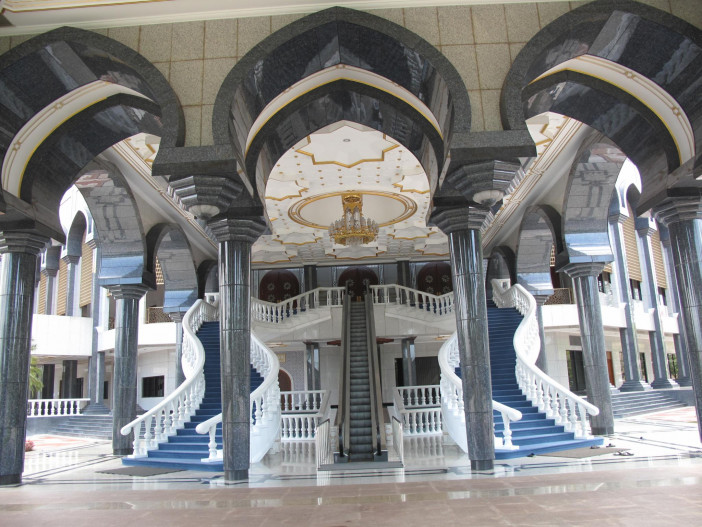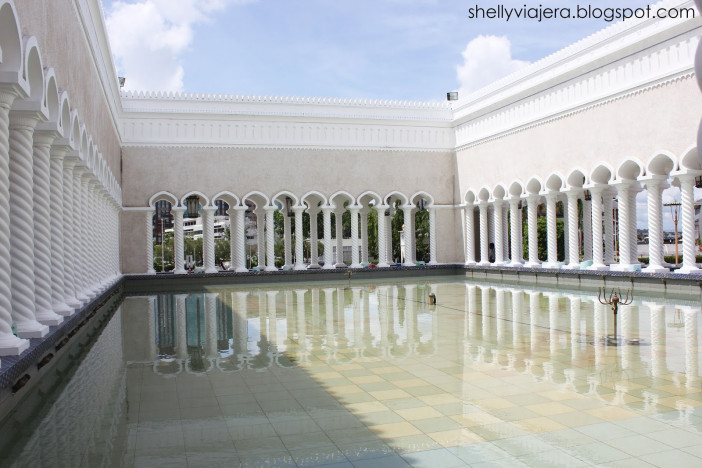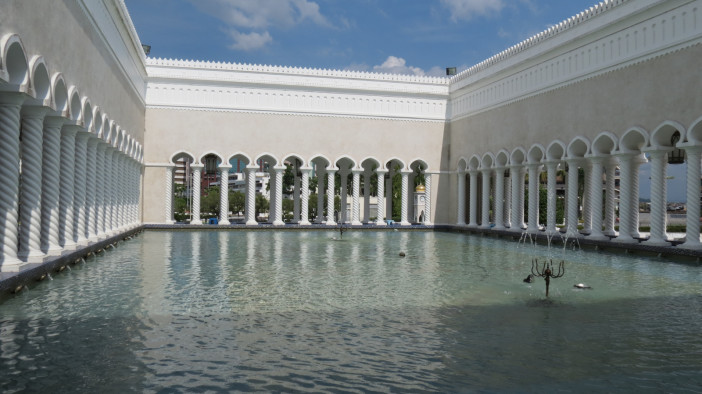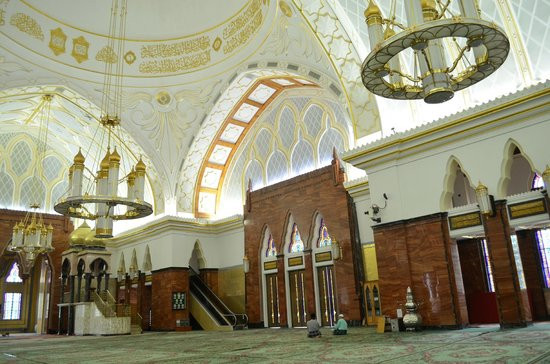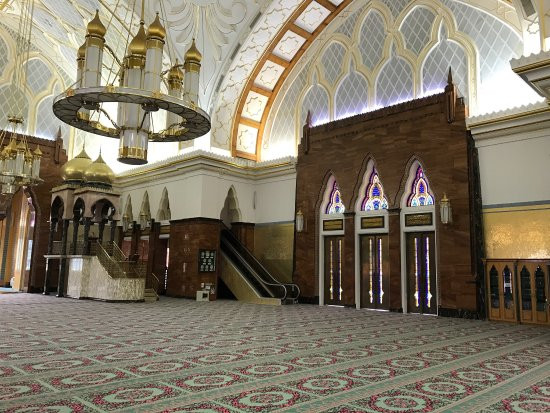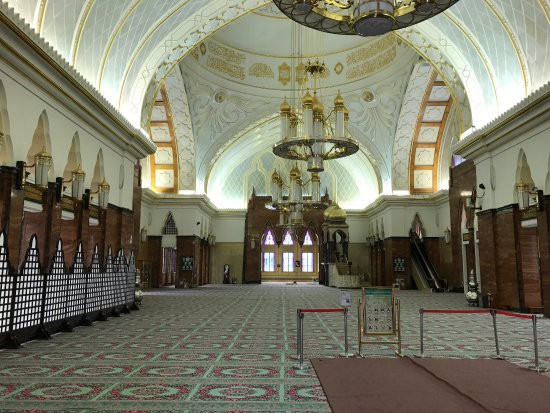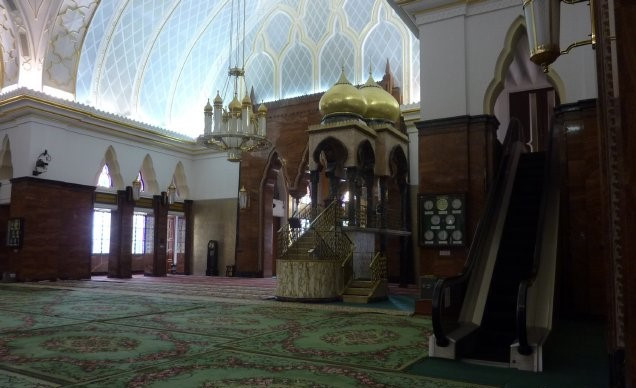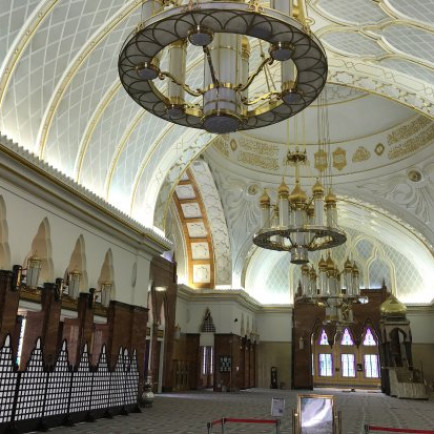Sultan Omar Ali Saifuddin Mosque
History
Omar Ali Saifuddien Mosque is an Islamic mosque in Bandar Seri Begawan, the capital of Brunei. It is often considered as one of the most beautiful mosques in the Asia Pacific. It is a place of worship for the Muslim community, a major historical site, and a famous tourist attraction of Brunei.
It is named after Omar Ali Saifuddien III, the 28th Sultan of Brunei, who initiated its construction. The mosque serves as a symbol of the Islamic faith in Brunei and dominates the skyline of Bandar Seri Begawan. The building was completed in 1958 and is an example of modern Islamic architecture.
The mosque unites Mughal architecture and Malay styles and was designed by the architect and sculptor Rudolfo Nolli.
Urban and Architectural
"According to a senior architect at the Public Works Department (PWD), the architect employed to design the mosque was an Italian named Cavalieri R Nolli, who used an early concept prepared by His Majesty himself and drawn with the assistance of Awang Besar Sagap, a PWD draughtsman. The actual design and detailed architectural plan was prepared by Booty and Edwards Chartered Architects including C.H.R Bailey who contributed a number of key additions such as raising the dome and creating the bund and lagoon as well as a number of other essential additions. He also oversaw much of the project and construction work was done by Sino-Malayan engineers. The construction costs were very modest between $7.7 and $9.2 million."
Built in an artificial lagoon on the banks of the Brunei River at Kampong Ayer the "village in the water" the mosque has marble minarets and golden domes, a courtyard and is surrounded by a large number of trees and floral gardens. A bridge reaches across the lagoon to Kampong Ayer in the middle of the river. Another marble bridge leads to a structure in the lagoon meant as a replica of a 16th-century Sultan Bolkiah Mahligai Barge. The barge itself was completed in 1967 to commemorate the 1,400th anniversary of Nuzul Al-Quran (coming down of the Quran) and was used to stage the Quran reading competitions.
The mosque's most recognizable feature, the main dome, is covered in pure gold. The mosque stands 52 m (171 ft) high and can be seen from virtually anywhere in Bandar Seri Begawan. The main minaret is its tallest feature. In a unique way it mixes Renaissance and Italian architectural styles. The minaret has an elevator to the top, where a visitor can enjoy a panoramic view of the city.
The interior of the mosque is for prayer only, with features such as stained glass windows, arches, semi-domes and marble columns. Nearly all the material used for the building were imported from abroad: the marble from Italy, the granite from Shanghai, the crystal chandeliers from England, and the carpets from Saudi Arabia.
Description
Details
Location
Bandar Seri Begawan BS8711, Brunei
Year of Build
1958
Drawings
Map
History
Omar Ali Saifuddien Mosque is an Islamic mosque in Bandar Seri Begawan, the capital of Brunei. It is often considered as one of the most beautiful mosques in the Asia Pacific. It is a place of worship for the Muslim community, a major historical site, and a famous tourist attraction of Brunei.
It is named after Omar Ali Saifuddien III, the 28th Sultan of Brunei, who initiated its construction. The mosque serves as a symbol of the Islamic faith in Brunei and dominates the skyline of Bandar Seri Begawan. The building was completed in 1958 and is an example of modern Islamic architecture.
The mosque unites Mughal architecture and Malay styles and was designed by the architect and sculptor Rudolfo Nolli.
Urban and Architectural
"According to a senior architect at the Public Works Department (PWD), the architect employed to design the mosque was an Italian named Cavalieri R Nolli, who used an early concept prepared by His Majesty himself and drawn with the assistance of Awang Besar Sagap, a PWD draughtsman. The actual design and detailed architectural plan was prepared by Booty and Edwards Chartered Architects including C.H.R Bailey who contributed a number of key additions such as raising the dome and creating the bund and lagoon as well as a number of other essential additions. He also oversaw much of the project and construction work was done by Sino-Malayan engineers. The construction costs were very modest between $7.7 and $9.2 million."
Built in an artificial lagoon on the banks of the Brunei River at Kampong Ayer the "village in the water" the mosque has marble minarets and golden domes, a courtyard and is surrounded by a large number of trees and floral gardens. A bridge reaches across the lagoon to Kampong Ayer in the middle of the river. Another marble bridge leads to a structure in the lagoon meant as a replica of a 16th-century Sultan Bolkiah Mahligai Barge. The barge itself was completed in 1967 to commemorate the 1,400th anniversary of Nuzul Al-Quran (coming down of the Quran) and was used to stage the Quran reading competitions.
The mosque's most recognizable feature, the main dome, is covered in pure gold. The mosque stands 52 m (171 ft) high and can be seen from virtually anywhere in Bandar Seri Begawan. The main minaret is its tallest feature. In a unique way it mixes Renaissance and Italian architectural styles. The minaret has an elevator to the top, where a visitor can enjoy a panoramic view of the city.
The interior of the mosque is for prayer only, with features such as stained glass windows, arches, semi-domes and marble columns. Nearly all the material used for the building were imported from abroad: the marble from Italy, the granite from Shanghai, the crystal chandeliers from England, and the carpets from Saudi Arabia.
Description


